It's time to stop lighting fires - Article by Bob McDonald, Naturalist
 This very widely and deeply researched article talks about the role of Australian native animals in protecting forests from fire and reviews the evidence for prescribed burns, criticising Bill Gammage's research on a number of grounds and noting misconceptions about Aboriginal fire management. "Research by the CSIRO published since 1994 has shown that there is a group of around 1000 species of moths called oecophorids whose caterpillars occur at densities of up to 400 per square metre and eat dead leaf litter. These insects are killed by fire and take some years to come back - leaving the bush accumulating leaf litter. With frequent fires they can be lost. Termites consume vast amounts of dead timber Australia wide and in long unburned forests they are particularly dense with huge mounds in southern Australia too but their role in fuel reduction remains unstudied! Cockroaches and a wide range of beetle species and their larvae do the same. Recent research has identified Lyrebirds and Mallee Fowl as playing key roles in fuel reduction, composting litter and twigs in vast amounts reducing fuel loads by tonnes by per year per bird. All these insects, birds and animals that reduce fuel loads are diminished or lost to fire. Fungi are known to be major consumers of dead timber - but their role in fuel reduction is yet to be researched and the role of wallabies, wombats and especially potoroos in distributing fungi, though it is obviously significant, remains unstudied.
This very widely and deeply researched article talks about the role of Australian native animals in protecting forests from fire and reviews the evidence for prescribed burns, criticising Bill Gammage's research on a number of grounds and noting misconceptions about Aboriginal fire management. "Research by the CSIRO published since 1994 has shown that there is a group of around 1000 species of moths called oecophorids whose caterpillars occur at densities of up to 400 per square metre and eat dead leaf litter. These insects are killed by fire and take some years to come back - leaving the bush accumulating leaf litter. With frequent fires they can be lost. Termites consume vast amounts of dead timber Australia wide and in long unburned forests they are particularly dense with huge mounds in southern Australia too but their role in fuel reduction remains unstudied! Cockroaches and a wide range of beetle species and their larvae do the same. Recent research has identified Lyrebirds and Mallee Fowl as playing key roles in fuel reduction, composting litter and twigs in vast amounts reducing fuel loads by tonnes by per year per bird. All these insects, birds and animals that reduce fuel loads are diminished or lost to fire. Fungi are known to be major consumers of dead timber - but their role in fuel reduction is yet to be researched and the role of wallabies, wombats and especially potoroos in distributing fungi, though it is obviously significant, remains unstudied.
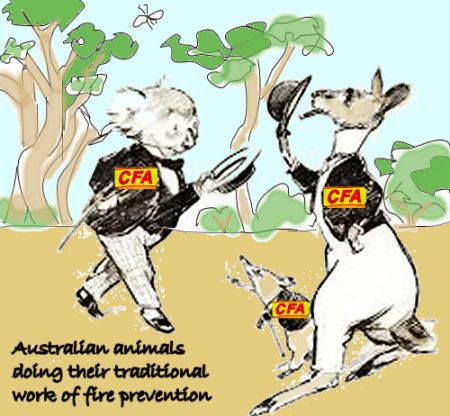 Bill Gammage’s popular book ‘The Biggest Estate on Earth: How Aborigines Made Australia’ contains many fundamental flaws and represents ‘blind advocacy’ for repeated burning’ because ‘Aboriginal people did it’.
Bill Gammage’s popular book ‘The Biggest Estate on Earth: How Aborigines Made Australia’ contains many fundamental flaws and represents ‘blind advocacy’ for repeated burning’ because ‘Aboriginal people did it’.
Like Keith Windshuttle’s ‘Fabrication of Aboriginal History’, Bill Gammage only pursued references - and interpretation of references - that supported his ‘hypothesis’. For Gammage that hypothesis is that all Aboriginal people farmed all of Australia using fire. This proposition was first published by Rhys Jones in an article in Australian Natural History in 1969 ‘Firestick Farming’ - and the references Jones used have as little merit as Gammage’s.
Jones used a painting of Lesueur from 1802 to show landscape burning by Tasmanian Aboriginal people when the painting is clearly of smoke signals. He quoted Peron observing the Derwent River ‘ablaze’ while Peron stated that ‘Tasmanians’ lit the fire to see them off. Bill Gammage now travels the country advocating frequent burning. He is not in any way qualified to do so and often does not look at the bush in these places before he advocates burning. He quotes no Aboriginal people or stories and ignores scientific evidence that cast doubt on his theories.
Mooney et. al. examined over 200 sediment cores of 70,000 years or more of age to determine fire frequency. They found that fire frequency increased 50 fold with the arrival of Europeans. https://palaeoworks-dev.anu.edu.au/?publication=mooney-s-d-et-al-2011-late-quaternary-fire-regimes-of-australasia .
Part of that increase was the use of fire as a weapon by Aboriginal people over more than a century - the firestick verses the musket as Joel Wright, a Gunditjmara Linguist stated in a recent talk. See /node/4240. He (Joel) could find no evidence of landscape burning in the Victorian western district but outlined the use of fire for smoke signals (see TROVE digitised newspapers for many references) and as an effective weapon. Gammage does not deal with these issues yet unlike Rhys Jones and Tim Flannery he had access to all of this information electronically and is a historian - inexcusable in my opinion. He also too often plays on locals’ fear and opinion of fires when he speaks, referring to those who do not want to burn as people or ‘greens’ from the city - see a part transcript of a recent talk by Gammage below.
Australia cannot in any way be seen as an ‘Estate’ nor Aboriginal people as ‘workers’ on an Estate - as if it was destined to be owned by ‘England’. It is a very complex continent geologically which is reflected in its complex plant, bird and animal communities. This in turn is reflected in over 500 tribes and thousands of clans that each manage ‘country’ differently. All are minimalist and complex in their management which is reflected in their more than 500 languages. To apply generalised models of fire management to such a complex landscape is disastrous. To apply American models for fire management is surely wrong and even harder to understand - especially given the radically different landscapes and flora https://www.georgewright.org/243kilgore.pdf. We seem to have adopted our version of ‘Wildland Fire Use’, using fires to achieve ‘other’ management objectives, prolonging bushfires for weeks, especially in National Parks, on the assumption they will make the landscape less likely to burn or burn ‘cooler’.
Eucalypts and other groups of Australian plants have been subjected to volcanic fires for more than 60 million years. We are in a ‘quiet time volcanically’ for the east coast, though volcanoes were active ‘recently’ in Queensland and Victoria 12,000 and 6500 years ago respectively. Humans are able to heal cuts and broken bones but we do not ‘thrive on’ or ‘need’ either. It is likely that vegetation, especially forests, has adapted to recovering from fire but, contrary to popular belief, does not ‘thrive’ on being burned or need it. Even the woodiest seed pods open without fire and many species regenerate from rootstock disturbed by digging mammals like wombats. Burning bush for grazing ‘green pick’ was common in the British Isles in the eighteenth century, though in Australia it often germinated a seemingly ‘inexhaustible’ seed and rootstock of trees and shrubs. Unless burned annually or replaced with introduced pasture species a cessation of burning led to the growth of dense scrub which takes 20 years or more to form a closing canopy and open understorey. This development of dense shrub is what is too often happening in burned bushland today, especially in National Parks and reserves. Just the fact that they can be burned is too often accepted in ‘blind faith’ as ‘reducing fuel’ and making the bush more open and flammable when the opposite is too often the fact. In addition to scrubby regrowth trees and shrubs are almost invariably killed by fire adding to fuel loads, as are the animals and fungi that normally reduce fuels.
The original forests had closed canopies and an open understorey
Judge Stretton stated in the 1939 Victorian Bushfire Royal Commission that the original forests had closed canopies and an open understorey which was easily traversed. In regard to fire he said they were relatively safe and it was repeated burning for grazing that opened the canopy, saw the vegetation thicken and made them unsafe. Even heathlands and grasslands are very different with a full compliment of mammals and birds when old - turning them over and maintaining open areas for orchids etc. and reducing their flammability.
There desperately needs to be multi-disciplinary research that incorporates local history. No single scientific discipline or even science alone confers the qualifications required to undertake the comprehensive research needed to inform fire management. For each area there needs to be a collation of all the geological, indigenous and historic data on fire - what was burned when by whom and why as far as possible. Indigenous people need to be resourced to investigate their own tribal and clan history of the use of fire, as Joel Wright did, and not have it ‘done for them’ by botanists and others. This in addition to identifying the fauna that reduces fuels and the impact of burning on increasing wind speed, drying the bush and streams that flow from it as bush regrows etc. for each area proposed to be burned.
Given the massive increase in burning and the threat it poses to wildlife and local economies etc. pausing the lighting of fires and diverting part of that budget to rapidly detecting and extinguishing any that start would appear the wisest thing to do while reviewing their impact.
An example of a very bad and counterproductive burn is the Melaleuca swamp burn in Cape Liptrap Coastal Park in Victoria in 2014 which saw Napalm (Flash 21), a chemical combination not registered for occupational health and safety for its use in Australia, used when torch lighting failed. The impact was dramatic and the fuel load appeared to increase dramatically when it killed all the melaleucas and burned into the peat. The carbon monoxide from this modified napalm killed dozens of burrow dwelling mammals that may well have survived a fire. This is in a remnant damp ferny vegetation strip coastal park that has never had a wildfire and not been burned since 1939 when the messmate forest stopped the grass fire - no wind and wet bark. Despite its common ‘visual’ classification messmate is not closely related to stringybarks and hybridises with ash type species. This and other proposed fires for this bush with 50 or more lyrebirds isolated against the coast by farmland are as a result of ‘desktop research’ by unqualified or barely qualified people. There has been no formal botanical survey work though more than a dozen threatened species of plants are known. Individuals cannot be condemned for doing their ‘job’ - but what they are charged with doing and how it is done has to be evaluated. Fire will clearly make this southeast facing coastline more flammable and diminish or wipe out its abundant ‘fuel reducing’ fauna. (See https://www.eclecticparrot.com.au )
Kakadu has all but lost its fauna ...
Kakadu National Park, subjected to decades of management burning, has all but lost its fauna from too frequent fire, https://www.abc.net.au/worldtoday/content/2014/s4120215.htm which is likely the cause of the loss of the hollow dependent Gouldian Finch from vast areas of its frequently burned former range.
Northern Australia was the last ‘frontier’ and fire almost invariably used against ‘explorers’ by Aboriginal tribes and clans is too easily interpreted as ‘ecological burning’ by botanists. The northern grazing industry has long been dependent on burning for green pick in a landscape that can barely be farmed.
These species losses are occurring in many parks and reserves across Australia where they have been subjected to so called ‘Ecological Burning’ and they too are losing mammals and especially hollow dependent species. This approach to burning, to increase the biodiversity of plants, may actually be in breach of the amended International Biodiversity Agreement of 1994 which states that tetrapods, animals with backbones, are a reliable indicator of biodiversity - not plants. This change to a Treaty signed in 1982 originally was as if in response to burning in Australian National Parks.
Burning or logging a forest, grassland or heathland may increases plant diversity - but it diminishes structural diversity and fauna and may well make the bush more flammable.
The original forests of Gippsland were not flammable, settlers of Fish Creek were not able to burn the forest to clear land until the railway line was cut through, bringing in a ‘draft’. This is a common story Australia wide in formerly wet forested areas.
Research by the CSIRO published since 1994 ( https://www.eclecticparrot.com.au/references/11-Common%201994%20Introduction%20vol%201.pdf ) has shown that there is a group of around 1000 species of moths called oecophorids whose caterpillars occur at densities of up to 400 per square metre and eat dead leaf litter. These insects are killed by fire and take some years to come back - leaving the bush accumulating leaf litter. https://www.eclecticparrot.com.au/references/13-Problems%20with%20control%20Burning%20NPA%20Bulletin.pdf With frequent fires they can be lost.
Termites consume vast amounts of dead timber Australia wide and in long unburned forests they are particularly dense with huge mounds in southern Australia too but their role in fuel reduction remains unstudied! Cockroaches and a wide range of beetle species and their larvae do the same. Recent research has identified Lyrebirds https://www.eclecticparrot.com.au/references/14-Nugent%20et%20al.%202014%20Wildlife%20Research-%20lyrebirds%20and%20fire.pdf and Mallee Fowl (Leonard unpub.) as playing key roles in fuel reduction, composting litter and twigs in vast amounts reducing fuel loads by tonnes by per year per bird. All these insects, birds and animals that reduce fuel loads are diminished or lost to fire.
Fungi are known to be major consumers of dead timber - but their role in fuel reduction is yet to be researched and the role of wallabies, wombats and especially potoroos in distributing fungi, though it is obviously significant, remains unstudied.
Almost all parrot species, possums, owls and many species of bats are at real risk of extinction from the loss of hollows which has occurred and is occurring right across the landscape - by burning as a ‘forest industry’ and for ‘ecological purposes’.
It’s time to stop lighting fires ...
It’s time to stop lighting fires and to use fixed rotating thermal imaging cameras to detect them and the world’s best and biggest firefighting aircraft, when needed, to rapidly extinguish them while we determine the effects and all the costs of this increased ‘fuel reduction’ and ‘ecological’ burning. We also need to evaluate objectively whether or not burning all bush is a major costly ecological mistake - and academically stop playing ‘my PHD is bigger than yours’.
Farms are repeatedly damaged by escaped ‘prescribed burns; and ‘prolonged’ fires, losing stock and fences, damaging rural community mental and bronchial health and breaking up families when burns go on for weeks.
Domestic and agricultural water supplies are compromised, fisheries and aquatic life are lost as dead vegetation washes into streams with rain following fires, robbing them of oxygen.
We have neglected even more deadly grassfires (per head of effected population).
We have neglected arson, often a mental health issue and an increasing problem we seem to be in collective denial about. Yet arson was was the cause of 50% of the 2009 Black Saturday fires https://www.wilderness.org.au/articles/summary-and-implications-report-victorian-2009-february-fires, most of the Hobart fires of 1967 and was the entire cause of the deadly Dandenongs fires of 1962 and 1968 which killed more than 30 people. Surveillance by fixed rotating thermal imaging cameras will greatly help in catching ‘fire lighters’.
There is virtually no research into lightning in Australia while in Canada ‘hot’ and ‘cold lightning’ has been identified. ‘Cold lightning’ is 95% of all strikes and negatively charged. While it will blow a tree apart and is very dangerous it passes through so quickly it rarely starts fire - but it can likely ‘cook sap’ in a tree and make it appear as if it has been burned in the past. ‘Hot Lightning’ is positively charged lightning that makes up as little as 5% of all strikes and though it starts fires it is almost always followed by rain.
The Australian history of bushfires includes a vast numbers of grass fires - like many of the most deadly on Ash Wednesday and as part the ‘Hobart Bushfires’ of 1967. Introduced species of pasture grasses die off in the summer, especially along roadsides and the increasingly in fire breaks which can act as fuses, ( https://www.myenvironment.net.au/index.php/me/Work/Fire/Fire-Resources/Fire-Break-submission-Chris-Taylor ) representing a high tonnage of highly flammable fuels in the fire season. These flammable grasses in semi rural areas, open to swirling winds unlike closed vegetation, their fires are particularly deadly and are often called bushfires. A good example of this issue is being addressed by the Kirkstall CFA with its replacement of pasture grasses with native species on road reserves. (https://www.eclecticparrot.com.au/references/02-Kirkstall%20euro%20grass%20conversion.pdf) This reduces fuel loads by 50-90% and native grasses are most often ‘green’ in the fire season.
The reintroduction of dead leaf and timber eating insects, the restoration of populations of Lyrebirds, leaf eating Koalas that even have an oecophorid that eats their droppings, where they have been lost should be key to future bushfire management. This approach to fire management is beyond the ‘skill sets’ and qualifications of judges, lawyers, foresters and botanists we have charged with fire management. Current fuel reduction burning becomes a ‘self fulfilling prophecy’ even when it leads to more fires as appears to have happened, especially in Western Australia. To stop burning where it makes bush more flammable may challenge a practice since colonial times, but will cost far less and provide significant economic returns from improved water production, fisheries, tourism and public health.
There is strong support by CSIRO and other scientists for research before we burn what is left of our older bush area in Cape Liptrap Coastal Park which is one of the increasingly rare examples of older bush remaining with its fuel reducing fauna - see letters https://www.eclecticparrot.com.au
In anything to do with fire management there has to be a ‘No Fault Claims Bonus’. Science is rarely ‘wrong’ but biological sciences should be continually evolving on this most recently occupied continent. We are faced with the corrosion of the Indigenous cultural records from loss of scar, ceremonial, birthing and marked trees along with the potential extinction of many species of birds and animals, also of indigenous stories, from unnecessary or ill-informed burning. Both science and the management it informs must be able to change in response to new information. We need the experience of thousands of foresters and botanists to integrate with the breadth of research in other biological sciences which need a significant portion of fire research funding. There is significant rural employment potential Australia wide to control the animals that spread flammable weeds, protect the forests and bushland from fire and realise natural bushland’s potential economic value for water, fisheries production, tourism and carbon sequestration.
Naturalist Bob McDonald January 2015
Bill Gammage Promoting Fire in East Gippsland
Bill Gammage applied his ideas on burning in response to questions from the audience at a meeting he addressed at Bairnsdale on the 5th of November 2014;
Bill Hodge - 3rd Generation Mountain Cattleman
Would you be in favour of giving a certain area of bush for mountain cattlemen to manage as they see fit for say 5 or 6 years?
Gammage: Yes I’ve already suggested to Graeme Stoney (Mountain Cattleman) and others that after that fire which is inevitably going to come, there is already in place a plan that basically divides an area into three - leaves one area alone - doesn’t do anything; puts only fire in another area and then puts fire and grazing and the way cattlemen burn in the third and see what happens in those three different areas.
LR: Why didn’t you interview any Aboriginal people?
Gammage: If I had Aboriginal friends, I did talk to them. Places like around Narrandera and Alice Springs and the Coorong, North east Tasmania. I did speak to Aboriginal people. But if I didn’t know Aboriginal people I felt it was far too rude to roll up from Canberra, especially of all places (crowd snickers) and say well here I am, you got 20 minutes, give me some basic information and I’ll be out of here. It’s just too rude. These are really important matters - not only the land management, but totems and so on and um yeah… you really need to be really trusted before you can even brave such a question and since my book is about the whole of Australia, it would have been more than a lifetime’s work to have done that.
Danny O’Brien, Member for Eastern Victoria: We in the Government have increased the burning targets; we’ve exceeded them once and dismally failed them last year. Is the solution in your opinion more burning of more area or better burning or different burning?
Gammage: All of the above, (applause) and after you’ve done that more of the above (applause).
I have commended the Government for increasing the hectares. I think we should accept that politicians have a very different problem and there are a great many electors opposing any sort of burning and they are translating that into practice. So when they expand their areas of controlled burning they are really softening up public opinion in favour of ALL burning and that is extremely valuable because, let’s face it country people and like-minded people are a minority in a democracy and we’re never going to get anywhere unless you can change the votes of people in the city -and so doing softening up in this way. I congratulate them but I do think that it shouldn’t be seen as a failure if you don’t reach your target. What you do is say, ‘well we’re experimenting with weather and conditions and times of the year and that therefore makes any fixed target problematic and uncertain.’ Local people will give you a bit of leeway to burn locally, to seize the day; and those local people might be DEPI on the ground, CFA, farmers, loggers, whoever it may be. And what we want you to do when you burn is record the results basically and build up information about that area, which can then be translated into more efficient practice
---------------
It’s time to stop lighting fires
Bob McDonald, Naturalist* Pub: Jan 14
15.01.15 4:30 am
Originally published in Tasmanian Times
12 comments

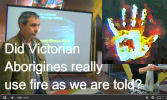 Note: This introduction has been edited for a number of small but important inaccuracies. Candobetter.net editor 29/12/2014.] Fuel reduction and ecological burning etc. are based on the assumption that all Aboriginal people undertook fire-stick farming. Joel Wright, traditional owner in southwest Victoria, is an indigenous language, culture and history researcher. He finds no evidence of wide-scale burning in Aboriginal language and culture, but does find other explanations for the history of aboriginal fires observed by Europeans. These were often smoke-signals exchanged between clans, for general communication and warning of approaching Europeans etc. There was also defensive burning to hinder explorers by burning feed their stock might otherwise eat. Other fires were to 'cover their tracks' when they were being pursued, etc.. Many of these fires were mistaken for landscape burning. Joel also found one record of burning small portions of dry grass around marshes to expose an area to attract birds to scratch for food there, making the birds potential meals for the indigenous hunters. Nowhere did he find anything to justify the destructive and dangerous annual incineration of the landscapes of the Gunditjamara by the Victorian Government. He was concerned that burning the bush as we do now kills the birds and animals so important to vegetation stories, removes scar and burial trees and 'burns micro particles from axes and spears that holds the clues as to what they were used for.The video was recorded from Wright's presentation at Australian Wildlife Protection Council Fire and Wildlife Conference, "Pause and Review Victoria's Fire Management." November 2014
Note: This introduction has been edited for a number of small but important inaccuracies. Candobetter.net editor 29/12/2014.] Fuel reduction and ecological burning etc. are based on the assumption that all Aboriginal people undertook fire-stick farming. Joel Wright, traditional owner in southwest Victoria, is an indigenous language, culture and history researcher. He finds no evidence of wide-scale burning in Aboriginal language and culture, but does find other explanations for the history of aboriginal fires observed by Europeans. These were often smoke-signals exchanged between clans, for general communication and warning of approaching Europeans etc. There was also defensive burning to hinder explorers by burning feed their stock might otherwise eat. Other fires were to 'cover their tracks' when they were being pursued, etc.. Many of these fires were mistaken for landscape burning. Joel also found one record of burning small portions of dry grass around marshes to expose an area to attract birds to scratch for food there, making the birds potential meals for the indigenous hunters. Nowhere did he find anything to justify the destructive and dangerous annual incineration of the landscapes of the Gunditjamara by the Victorian Government. He was concerned that burning the bush as we do now kills the birds and animals so important to vegetation stories, removes scar and burial trees and 'burns micro particles from axes and spears that holds the clues as to what they were used for.The video was recorded from Wright's presentation at Australian Wildlife Protection Council Fire and Wildlife Conference, "Pause and Review Victoria's Fire Management." November 2014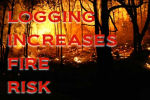 The heat and severity of Kinglake and Marysville fires that killed 159 people on Black Saturday was significantly increased by clear-fell logging of forests, scientists believe.
The heat and severity of Kinglake and Marysville fires that killed 159 people on Black Saturday was significantly increased by clear-fell logging of forests, scientists believe.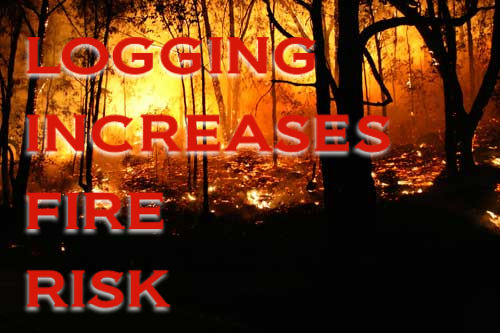
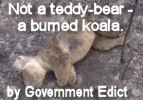
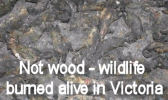 Video inside. This article is about the effects of 390,000 ha of native vegetation targeted to be burned every year in Victoria, Australia's most cleared state. The video inside this article documents how vast numbers of Australian wildlife are burned alive in scientifically dubious prescribed burns, mandated by the Victorian Government. It asks whether the cruel and avoidable fate of many wildlife in prescribed burns is really protecting human lives and assets or merely a way of meeting an arbitrary target. Others would be much harsher and say that this may be a calculated strategy to rid the state of wildlife in addition to an apparently deliberate failure to cooperate with wildlife activists in making easily protected wildlife corridors to connect viable habitat.[1]
Video inside. This article is about the effects of 390,000 ha of native vegetation targeted to be burned every year in Victoria, Australia's most cleared state. The video inside this article documents how vast numbers of Australian wildlife are burned alive in scientifically dubious prescribed burns, mandated by the Victorian Government. It asks whether the cruel and avoidable fate of many wildlife in prescribed burns is really protecting human lives and assets or merely a way of meeting an arbitrary target. Others would be much harsher and say that this may be a calculated strategy to rid the state of wildlife in addition to an apparently deliberate failure to cooperate with wildlife activists in making easily protected wildlife corridors to connect viable habitat.[1]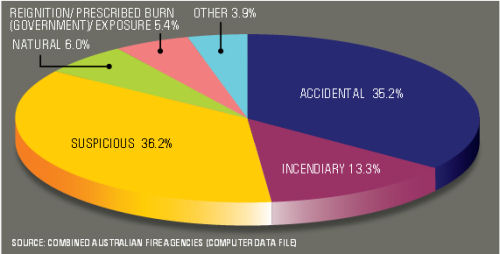
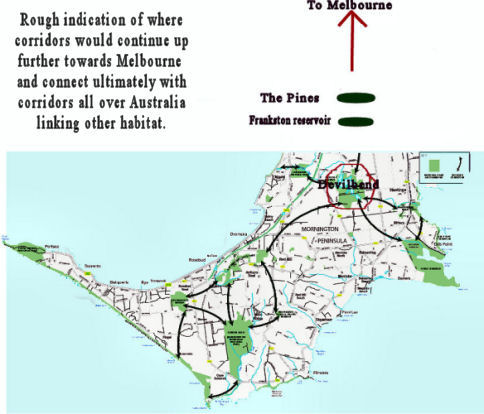
 Photo by Jill Quirk
Photo by Jill Quirk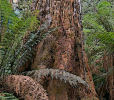 Article about Brown Mountain on the Anarchist media net says that the logging of Brown Mountain will be done by public servants who would be otherwise deployed in our poorly tended ecosystems if they were not sent off to log. However EEG disagrees on this point. See related important corrections to original article in comments below it inside. They also make interesting reading.
Article about Brown Mountain on the Anarchist media net says that the logging of Brown Mountain will be done by public servants who would be otherwise deployed in our poorly tended ecosystems if they were not sent off to log. However EEG disagrees on this point. See related important corrections to original article in comments below it inside. They also make interesting reading.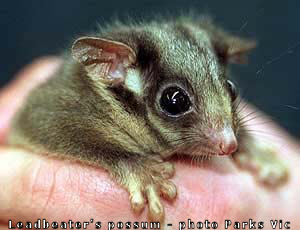
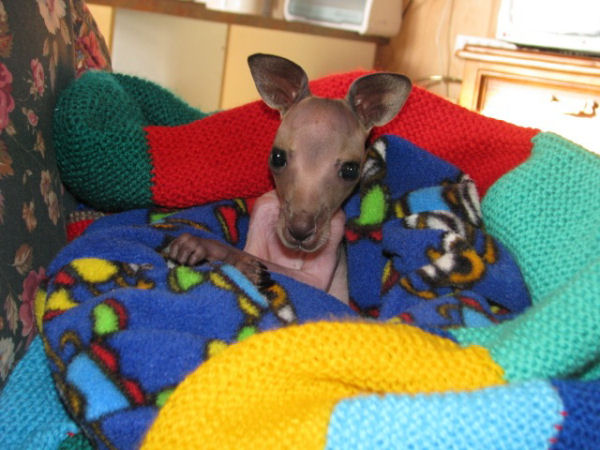 Photo by Stella Reid
Photo by Stella Reid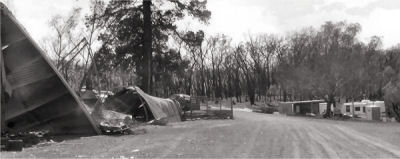
.jpg)
 click here for film
click here for film Kangaroo Island scrub fire, photo from CFS by Lisa Dalby, December 2007
Kangaroo Island scrub fire, photo from CFS by Lisa Dalby, December 2007 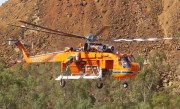
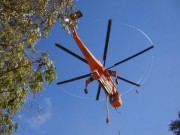

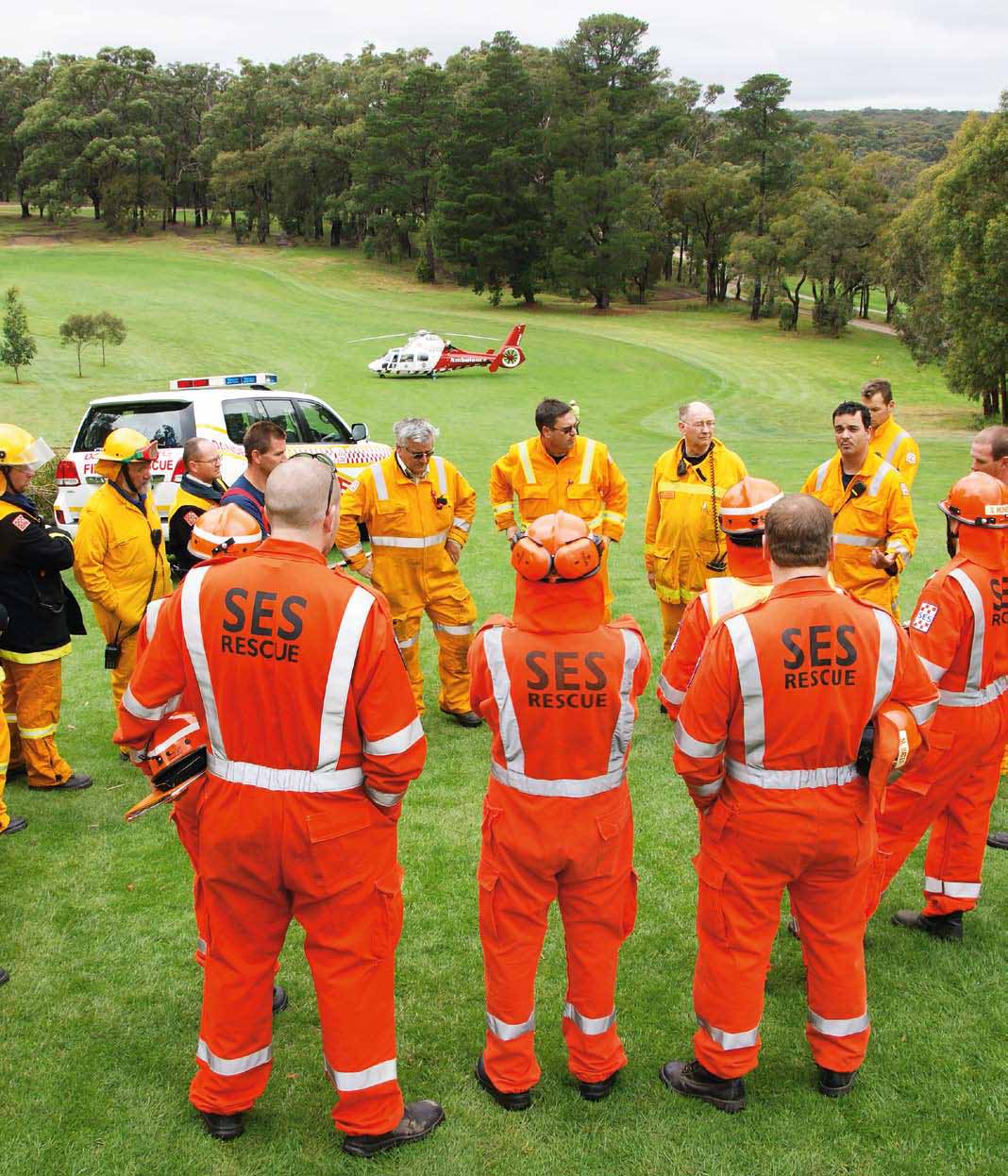


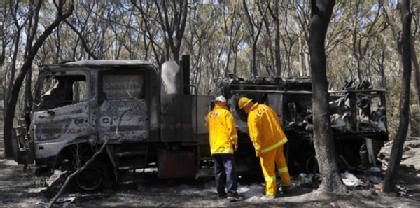

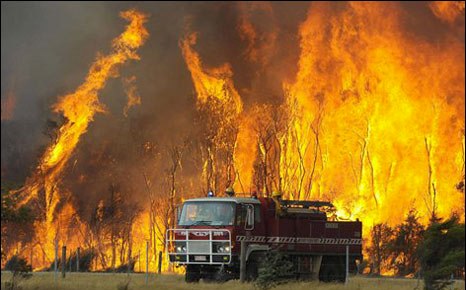
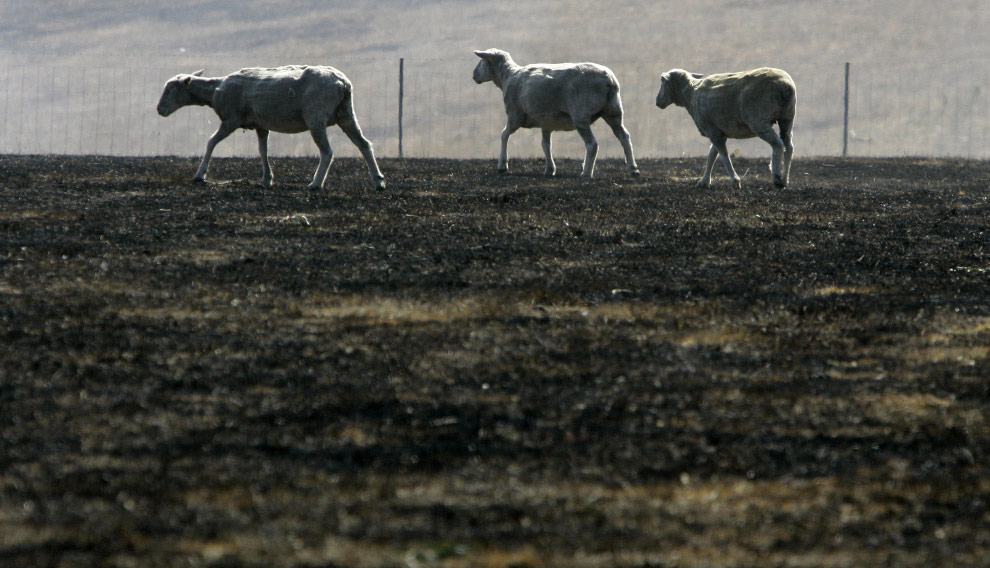
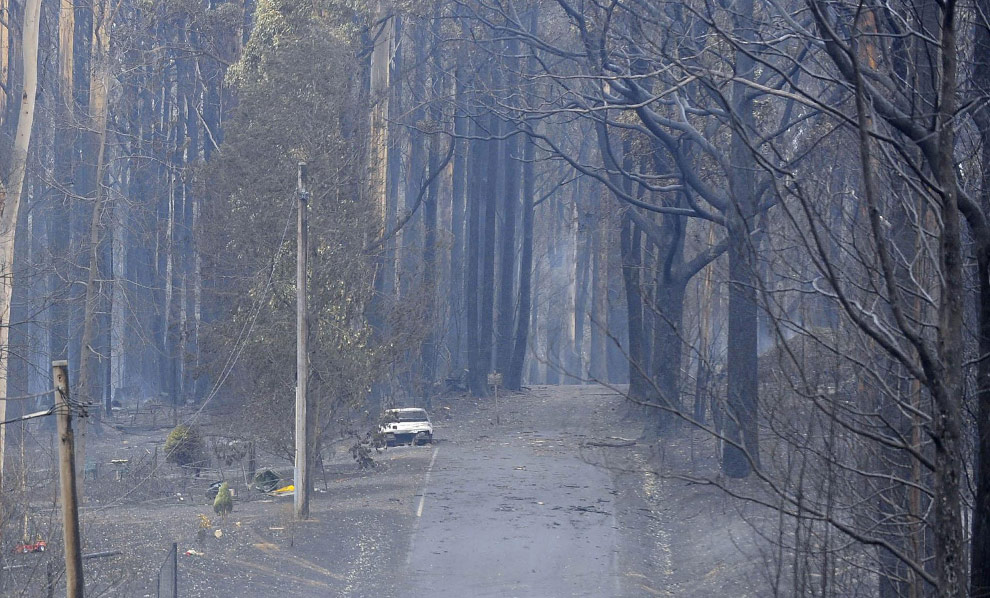
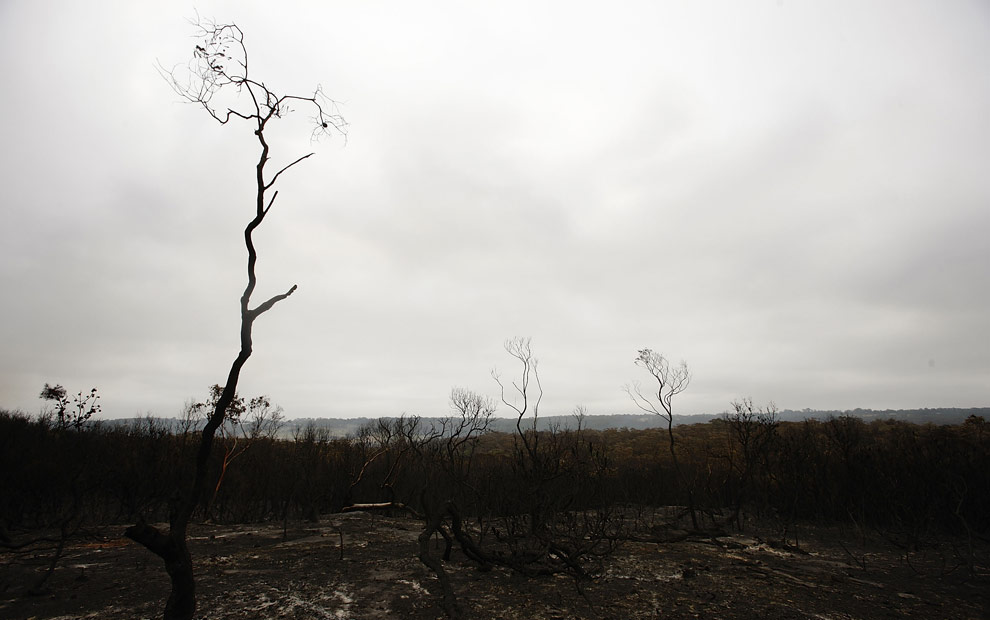

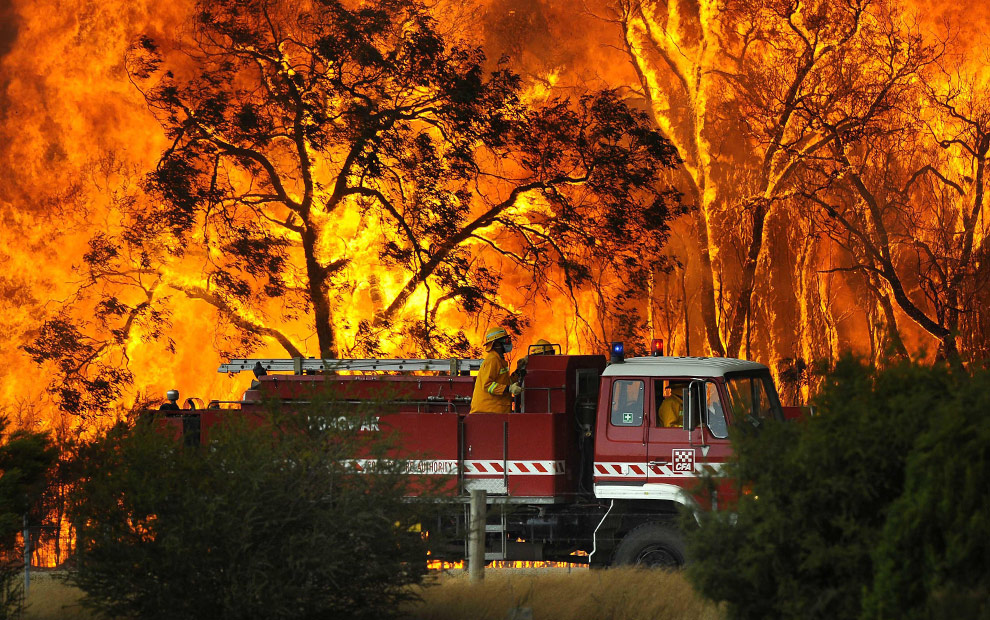
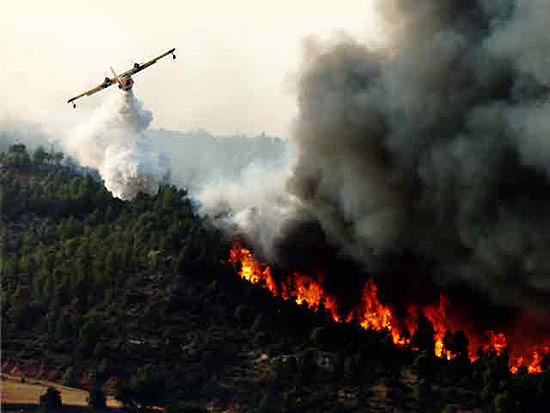
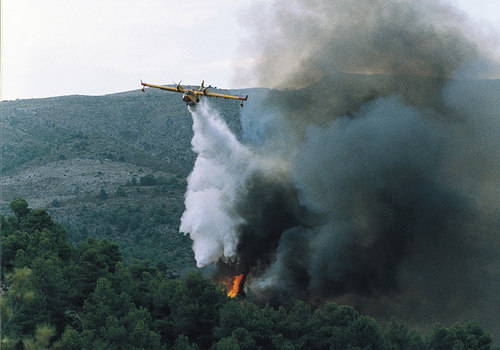


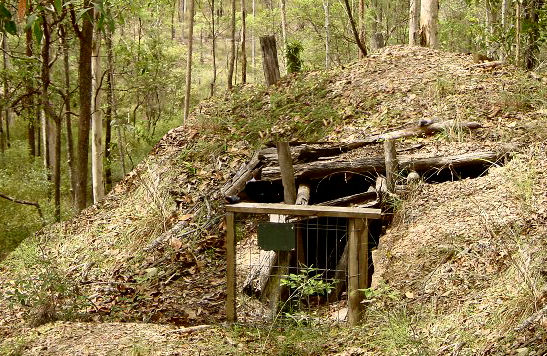
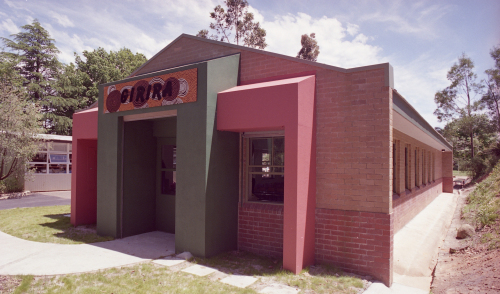

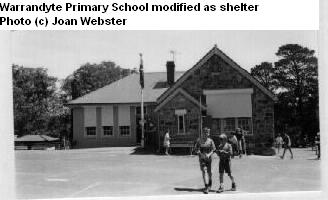
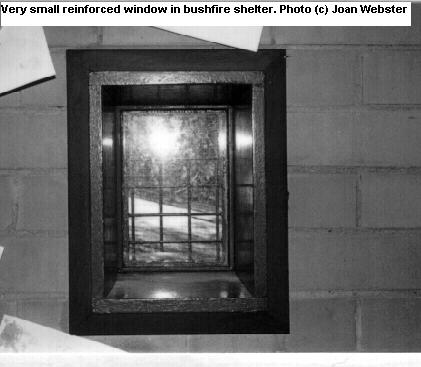
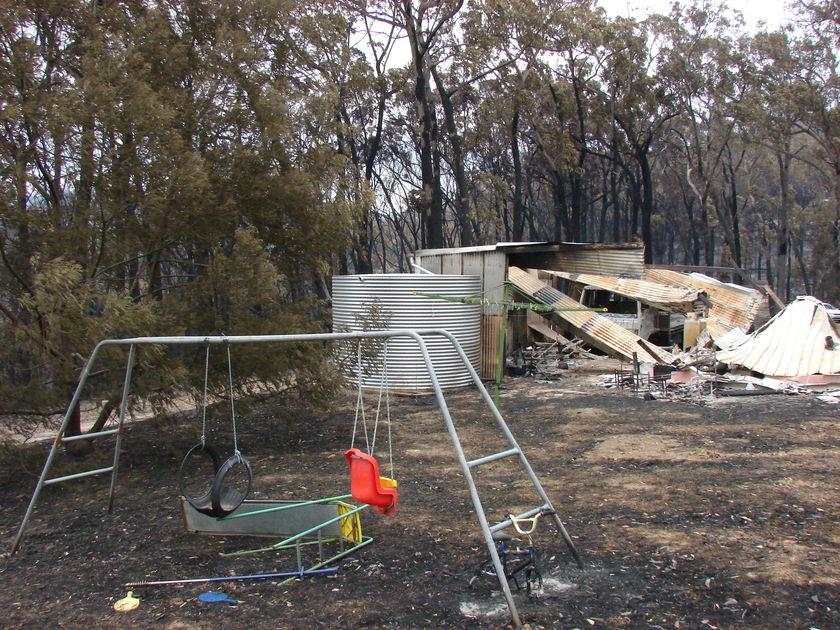
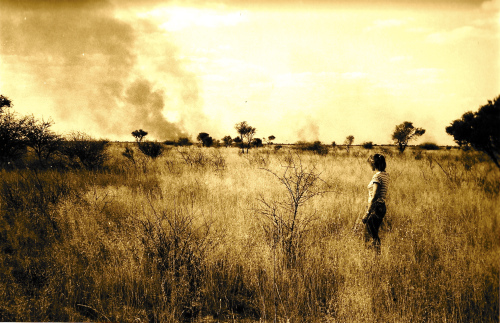

 Whilst many people have been aware (but have mostly been ignored) that vegetation, especially forests, creates rain, and whilst desertification has been linked to deforestation historically many times, there is a new and robust theory to explain how this may happen.
Whilst many people have been aware (but have mostly been ignored) that vegetation, especially forests, creates rain, and whilst desertification has been linked to deforestation historically many times, there is a new and robust theory to explain how this may happen.


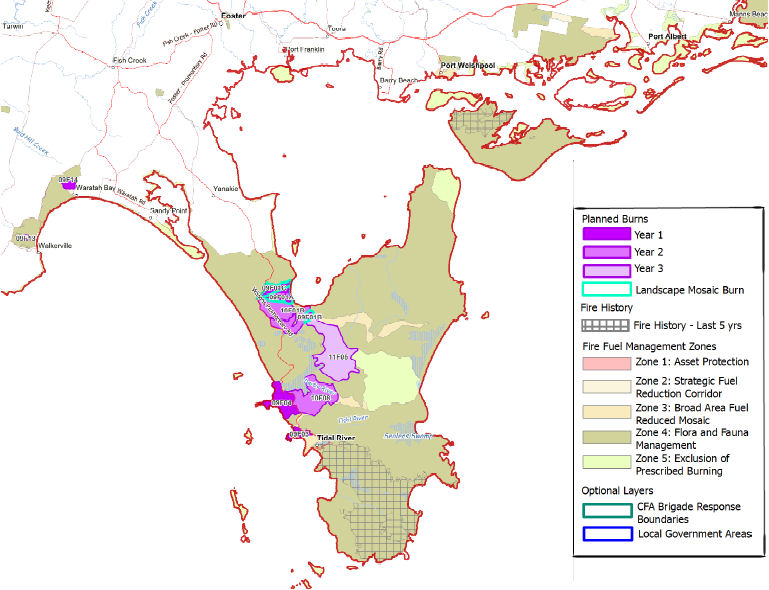
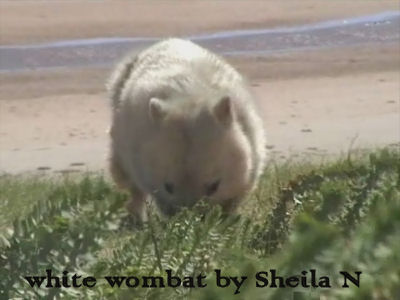
 Since Black Saturday - Feb 7, 2009 - when Australia's worst-ever bushfires on the hottest day in Victoria's recorded history completely destroyed all infrastructure at Wildhaven animal rescue and release center, Alan and Stella Reid have had a few visitors, including Steve Irwin's father, Bob Irwin, and Maryland Wilson of the AWPC, and four kangaroos that also escaped with their lives. Allan Reid tells an incredible story of his own survival as the place burned to the ground leaving him and perhaps four kangaroos alive. Please consider donating money for hay and rebuilding.See also
Since Black Saturday - Feb 7, 2009 - when Australia's worst-ever bushfires on the hottest day in Victoria's recorded history completely destroyed all infrastructure at Wildhaven animal rescue and release center, Alan and Stella Reid have had a few visitors, including Steve Irwin's father, Bob Irwin, and Maryland Wilson of the AWPC, and four kangaroos that also escaped with their lives. Allan Reid tells an incredible story of his own survival as the place burned to the ground leaving him and perhaps four kangaroos alive. Please consider donating money for hay and rebuilding.See also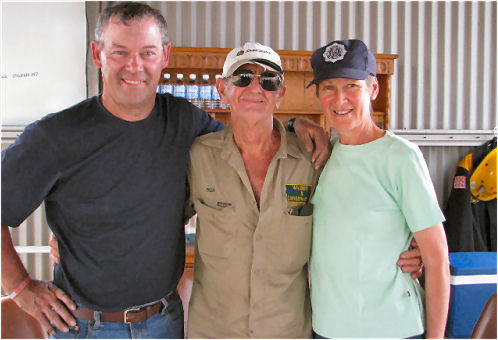

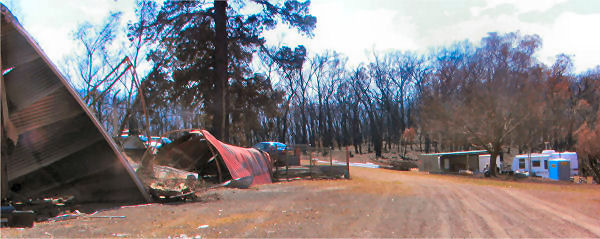
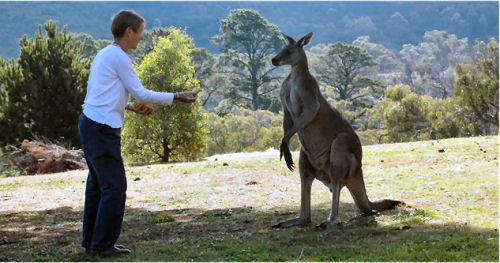 Stella & Boof in happier times
Stella & Boof in happier times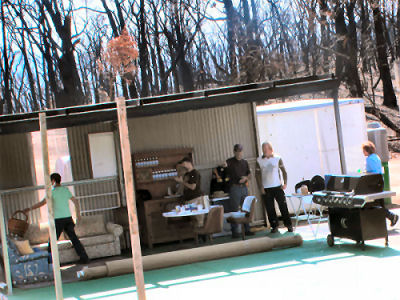

 "If you purchase two copies of The Age this Saturday, soak one in the bath overnight and read the other. Think of the copy coming out of the bath, as the landscape prior [to the impact of repeated fires] and the dry paper, as the landscape is today." (Article by Duane Norris for Natural Sequence Farming)
"If you purchase two copies of The Age this Saturday, soak one in the bath overnight and read the other. Think of the copy coming out of the bath, as the landscape prior [to the impact of repeated fires] and the dry paper, as the landscape is today." (Article by Duane Norris for Natural Sequence Farming)
Recent comments